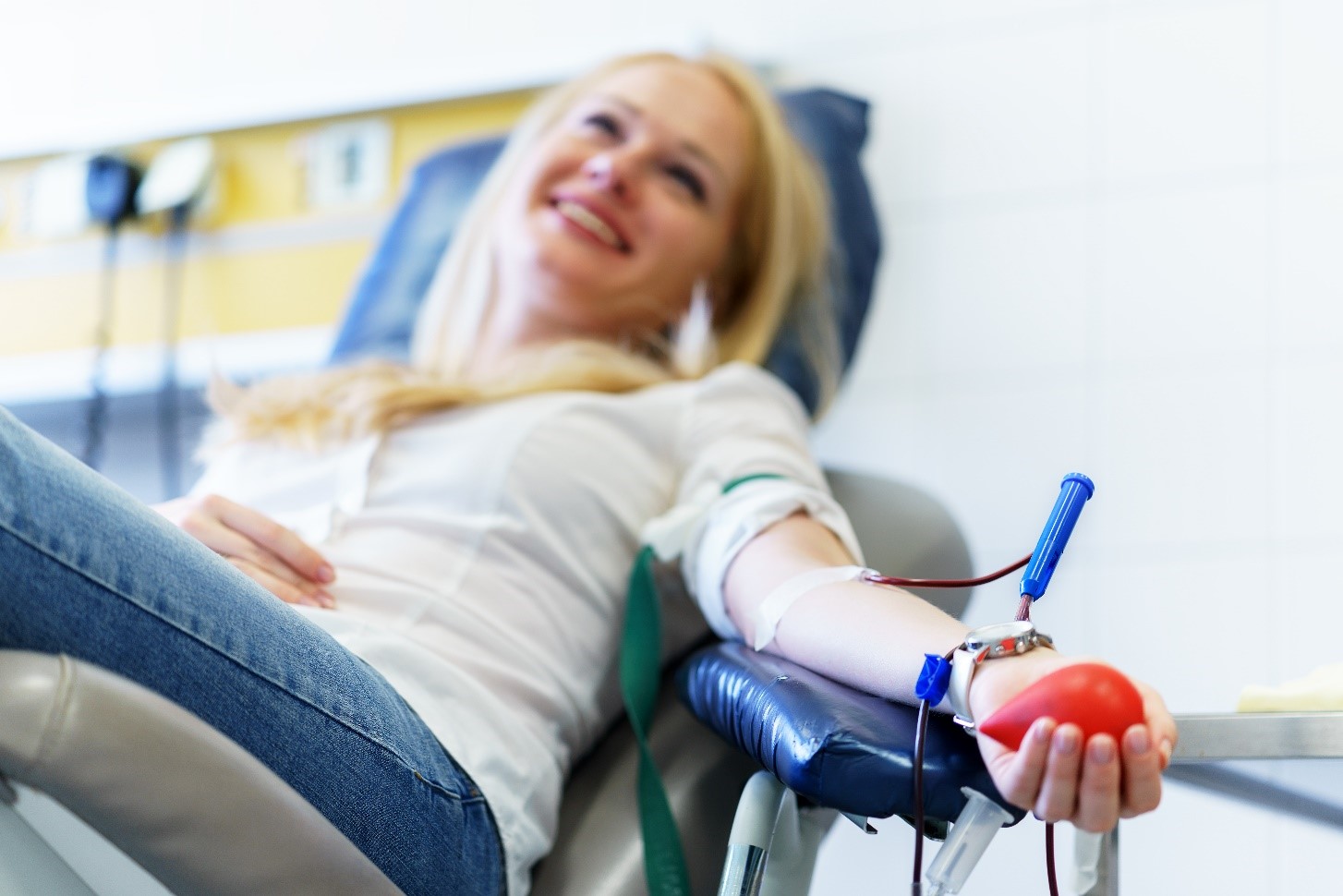Understanding the Plasma Donation Process in Orem
The Science Behind Plasma: What You’re Really Donating
Plasma is the liquid component of blood, making up about 55% of its total volume. It is primarily composed of water, proteins, electrolytes, hormones, and nutrients, playing a vital role in maintaining bodily functions. When you donate plasma, you are contributing a critical substance that is used in numerous medical therapies. The proteins found in plasma, such as albumin and immunoglobulins, are crucial for maintaining blood pressure, providing immunity, and facilitating blood clotting. Understanding what plasma is and its components can enhance your motivation to donate. Plasma donation is crucial for individuals suffering from conditions such as hemophilia and immune deficiencies, and the need for this precious resource continues to grow.
Navigating the Donation Centers: Where to Go in Orem
Orem is home to several plasma donation centers, each offering a safe and welcoming environment for donors. When choosing a donation center, consider factors such as proximity, operating hours, and available facilities. It’s advisable to check online for reviews and ratings to identify the center that best meets your expectations. Additionally, visiting the center’s website can provide important details regarding appointment scheduling, additional services, and donor eligibility criteria. Knowledge of the location and its reputation can help ease any nervousness about your first donation experience.
Preparation is Key: What You Need to Know Before Donating
Preparation for plasma donation is crucial to ensure a smooth process and a positive experience. Donors are encouraged to hydrate well the day before and of the donation to maintain optimal blood volume. Eating a nutritious meal that includes protein and iron – such as lean meats, spinach, or legumes – can help prepare your body for the process. Avoid alcohol and medications, like aspirin, for at least 24 hours prior, as they can affect your eligibility and health during the donation. Lastly, ensure you bring an acceptable form of identification and any required documentation, as centers maintain strict policies for donor safety and health regulations. This preparation not only promotes personal health but also enhances the overall efficiency of the donation process.
The Health Benefits of Donating Plasma
Boosting Your Own Health: The Hidden Perks
In addition to the altruistic reasons for donating plasma, there are also numerous health benefits associated with the practice. Donating plasma can lead to increased hydration levels and improved overall blood circulation in the body. Furthermore, donors often report improved well-being and an energized feeling post-donation — likely due to the release of endorphins, which are natural painkillers. Regular plasma donation can also help in maintaining healthy blood pressure and reducing the risk of diseases, as frequent checks allow for ongoing assessments of your health. Research has illuminated that frequent donors often feel a sense of empowerment and purpose, fostering mental well-being through their contributions to society.
Helping Others: The Impact of Your Contribution
When you donate plasma in Orem, you are directly contributing to life-saving medical treatments. Plasma-derived therapies are essential for patients with serious conditions such as burns, trauma, liver disease, and various immunodeficiencies. By giving plasma, you are playing a critical role in ensuring that hospitals and clinics have the resources needed to provide treatment to those in desperate need. Each donation has the potential to save multiple lives, as the collected plasma can be separated into different components to treat various ailments. Knowing that your donation contributes to the healing of others often brings profound satisfaction and a sense of community involvement.
The Myths and Facts: Debunking Common Misconceptions
There are various misconceptions about plasma donation that can deter potential donors. A common myth is that the donation process is painful; however, most donors report feeling only a small pinch during the needle insertion. Another prevalent myth is that plasma donation is not safe; in reality, plasma donation is a regulated and sterile process, closely monitored by healthcare professionals. Many also believe that donating plasma makes you instantly fatigued, but in truth, most donors resume normal activities soon after. Addressing these misconceptions through transparent conversation and educational resources can encourage more people in Orem to consider becoming regular donors, expanding the community of life-savers.
What to Expect on Donation Day
Your Experience: Step-by-Step of the Donation Process
On donation day, it’s essential to arrive at the center prepared and a bit early to complete any required paperwork. Upon arrival, staff will guide you through the check-in process, where you’ll provide identification and undergo a brief health screening to ensure eligibility. The screening includes questions about your medical history and a quick blood test to assess hemoglobin levels. After the screening, you’ll be escorted to the donation area, where trained professionals will insert a sterile needle into your arm to begin the plasma extraction. The actual donation typically takes around 45 minutes to an hour, during which you can relax, read, or watch a movie. Once completed, you’ll have some time in the recovery area to relax and hydrate before going home.
Post-Donation Care: Tips to Ensure Your Well-Being
After donating plasma, it’s crucial to take care of yourself to ensure a smooth recovery. Begin by drinking plenty of fluids and consuming a healthy snack, as this can help replenish energy levels. Avoid strenuous exercise for at least 24 hours post-donation, as engaging in demanding activities too soon can lead to dizziness or fatigue. Listen to your body and allow yourself to rest if needed. Many donation centers provide information on post-donation care, including how to manage any soreness at the needle site. By adhering to these guidelines, you can ensure your health and maintain eligibility for future donations.
Frequently Asked Questions: Addressing Your Concerns
Potential donors often have various questions about the plasma donation process. One common concern is whether it’s safe to donate if you have conditions like diabetes; as long as your health is managed and stable, you may still be eligible. Another frequent question revolves around the frequency of donations; generally, you can donate plasma every 28 days, allowing ample time for your body to replenish its plasma levels. Donors also wonder about compensation – while some centers provide monetary compensation for your time, others offer rewards through loyalty programs. It’s important to clarify these details with your chosen center before your donation.
Becoming a Regular Donor: Making a Difference
The Commitment: How Often Can You Donate?
To maintain healthy blood levels and ensure ample plasma supply for those in need, the guidelines suggest donating plasma no more than twice a week, with a full day of recovery in between. This commitment not only contributes significantly to the healthcare community but also fosters a beneficial routine for you as a donor. By setting aside this time in your life to give back, you are joining a community of dedicated individuals who prioritize the health and well-being of others. Regular donors often report a growing sense of attachment to the plasma donation community, leading to stronger personal connections and support networks.
Building a Community: Engaging with Other Donors
Becoming a plasma donor connects you with a unique community of like-minded individuals who also value the importance of giving back. Many donation centers offer donor appreciation events where donors can meet, share experiences, and celebrate the impact of their contributions. Engaging with other donors encourages a supportive culture that promotes regular donation. Additionally, social media platforms serve as excellent venues for sharing stories, raising awareness, and connecting with others who share the same commitment to helping those in need.
Incentives and Rewards: What’s in It for You?
While the act of donating plasma is inherently altruistic, many centers offer incentives that make participation even more appealing. These incentives can include financial compensation for your time and plasma, loyalty programs providing discounts or gifts, and even opportunities to participate in donor referral programs. Some centers have contests or events that give donors chances to win prizes, fostering a sense of competition and engagement. Donors often find that these rewards not only enhance their experience but also encourage repeat donations, thereby creating a cycle of giving that yields substantial benefits for both themselves and those in need.
FAQ
Question: What age must you be to donate plasma? – Most plasma donation centers require donors to be at least 18 years old. This age requirement is in place to ensure that donors meet physical and health criteria for safe donation.
Question: What is the weight requirement for donating plasma? – Generally, donors must weigh at least 110 pounds (50 kg) to ensure the safety and health of both the donor and the recipient.
Question: Can I donate plasma if I have had a tattoo or piercing? – Yes, you can donate plasma after getting a tattoo or piercing, but typically there is a waiting period of 6 to 12 months depending on local regulations and health guidelines.
Question: Are there any specific health conditions that disqualify someone from donating plasma? – Yes, certain health conditions such as active infections, uncontrolled diabetes, or cardiovascular issues may disqualify you. It’s best to consult with the donation center for specific guidelines regarding your health.
Question: Can you donate plasma while pregnant? – No, it is generally not recommended for pregnant women to donate plasma due to the increased nutritional and fluid demands on their bodies.
Question: What should I wear to a plasma donation center? – It is advised to wear loose-fitting clothing, especially short sleeves or clothes that allow easy access to your arms, to facilitate the donation process.
Question: How are plasma donation centers ensuring donor safety during health crises like pandemics? – Plasma donation centers implement strict hygiene protocols, including regular sanitization, health screenings for both donors and staff, and the use of personal protective equipment to ensure donor and patient safety.
Question: Is there an age limit for donating plasma? – While age limits vary by center, most places allow individuals up to 65 years old to donate, provided they meet health and weight criteria. Always check with your local center for specific regulations.
Useful Resources
- American Red Cross
- AABB (American Association of Blood Banks)
- Plasma Alliance
- America’s Blood Centers
- Canadian Blood Services
- S. Food and Drug Administration (FDA)
- Centers for Disease Control and Prevention (CDC)
- World Health Organization (WHO)












